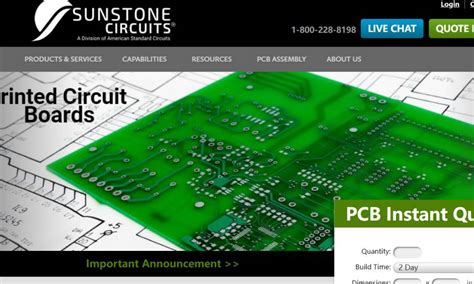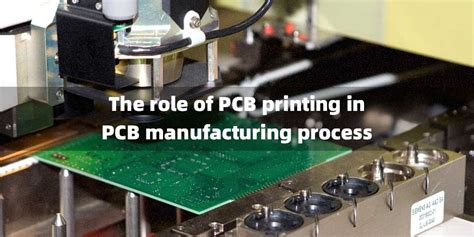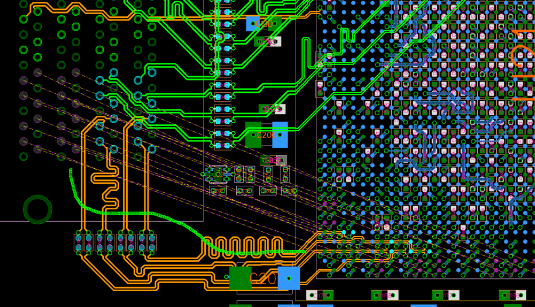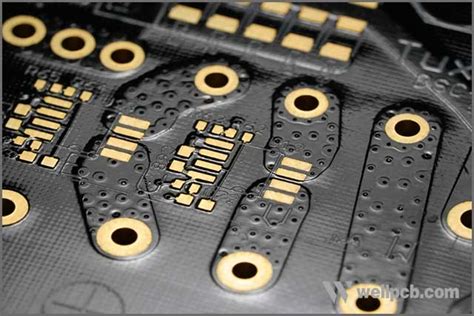Mastering Advanced Circuits Assembly for Cutting-Edge Innovation
Key Takeaways
Mastering advanced circuits assembly is crucial for any innovator looking to propel their ideas into reality. At the core of this process lies the pcb assembly technique—essential for ensuring that every component is accurately placed and soldered onto the circuit board. Utilizing the right tools not only streamlines this process but also enhances the overall quality of pcba. By incorporating state-of-the-art machinery and precision tools, one can significantly reduce errors and improve efficiency in circuit layouts. It’s not just about assembling components; it’s about understanding how each part interacts within the greater ecosystem of technology. Adopting advanced methodologies can lead to higher yields and more reliable products, ultimately driving forward innovations that reshape industries. As such, staying informed of emerging trends in circuit design will be vital for innovators aspiring to be at the forefront of technological advancements.
Introduction to Advanced Circuits Assembly: A New Frontier in Innovation
In today’s fast-paced technological landscape, advanced circuits assembly signifies a pivotal advancement in innovation. As we navigate through this new frontier, understanding the intricacies of pcb assembly becomes essential. This process is not merely about assembling electronic components; it encompasses a comprehensive understanding of various methodologies that enhance the overall performance and reliability of the final product.
Utilizing state-of-the-art tools and techniques, innovators can streamline their pcba processes, ensuring precision and efficiency. For instance, employing advanced soldering techniques can significantly reduce defects and improve the durability of assembled circuits. Moreover, modern software solutions enable engineers to visualize circuit designs more effectively, fostering a collaborative environment where ideas can flourish.
“In the realm of circuit assembly, leveraging innovative practices is crucial for achieving success in complex projects.”
It’s important to remain attuned to emerging trends that influence advanced circuits assembly. Staying proactive in adopting these trends not only fosters continuous improvement but also equips innovators with the agility needed to respond to market demands swiftly. With each wave of technological advancement, the potential for groundbreaking discoveries becomes ever more pronounced as we push the boundaries of what is possible in circuit design and implementation.
Essential Tools for Efficient Advanced Circuits Assembly
To master advanced circuits assembly, equipping oneself with the right tools is paramount. In the realm of PCB assembly or printed circuit board assembly, the success of projects hinges on precision and efficiency. A well-rounded toolkit not only streamlines the workflow but also enhances overall productivity.
At the forefront of essential equipment are tools such as soldering stations, which guarantee that connections are secured with high-quality solder. The use of automated pick-and-place machines can significantly increase efficiency, especially in large-scale PCBA production, as they allow for rapid placement of components on the board with incredible accuracy.
Another indispensable tool is the reflow oven, which ensures that all solder joints are uniformly heated for optimal quality. Alongside these, high-precision measuring devices like calipers and micrometers enable operators to check component specifications, ensuring they meet necessary tolerances.
| Tool | Purpose |
|---|---|
| Soldering Station | Secure solder connections |
| Automated Pick-and-Place | Rapid component placement |
| Reflow Oven | Uniform heating for solder joints |
| Calipers | Measurement of component specifications |
| Micrometers | Checking tolerances and dimensions |
Moreover, software tools designed for circuit design can facilitate simulations that help identify potential issues before assembly begins. Implementing these instruments not only addresses precision but also empowers innovators to push boundaries in technology.
In summary, utilizing a robust arsenal of tools is critical for anyone involved in advanced circuits assembly. The focus on quality equipment lays a foundation for innovation, paving the way for the next wave of technological advances in circuit design and implementation.
Techniques for Precision in Circuit Assembly
Achieving precision in pcb assembly is vital for ensuring the efficacy of modern electronic devices. To elevate the standards of pcba, several techniques come into play. First and foremost, high-resolution printing methods are crucial, allowing for incredibly detailed designs that fit compactly within available space. This is complemented by the use of advanced alignment systems which ensure that components are perfectly positioned during assembly. Another critical technique involves the implementation of automated optical inspection. This technology plays an essential role in identifying defects and ensuring quality, thereby reducing waste and enhancing overall production efficiency. Additionally, utilizing soldering techniques, such as wave soldering or reflow soldering, plays a significant role in establishing strong electrical connections while maintaining component integrity. By integrating these methods effectively, innovators can enhance not just the quality but also the performance of their advanced circuits assembly, paving the way for groundbreaking advancements in technology.

Strategies to Enhance Performance in Circuit Design
In the rapidly evolving landscape of electronics, enhancing performance in circuit design is essential. One effective strategy involves employing robust layout techniques during the pcb assembly phase. Properly optimizing the routing of traces can significantly reduce parasitic capacitance and inductance, ultimately leading to improved signal integrity. Additionally, integrating high-quality components during the pcba process ensures that each circuit operates within its optimal parameters, preventing performance degradation over time. Another crucial aspect is thermal management; utilizing advanced materials and innovative designs can effectively dissipate heat, which is vital in maintaining the longevity and reliability of electronic devices. Furthermore, adopting comprehensive testing methodologies throughout the assembly phase enables early identification of potential issues, allowing for quicker adjustments that enhance overall functionality. By focusing on these strategic approaches, innovators can push the boundaries of what’s possible in circuit design and ensure that their products meet increasing market demands efficiently and effectively.

Overcoming Common Challenges in Advanced Circuits Assembly
Advanced circuits assembly, or pcb assembly as it is commonly known, presents various challenges that can impede the innovation process. One major issue often encountered is achieving consistent quality, as slight variations in the pcba process can lead to significant performance deviations. This inconsistency necessitates rigorous quality control measures, including inspections and automated testing to ensure that each circuit meets the required standards. Moreover, managing complex designs with tight tolerances poses another hurdle. Advanced compact designs often complicate soldering techniques and alignment accuracy, potentially frustrating even seasoned specialists.
In addition, material selection plays a critical role in the success of advanced circuits assembly. The use of inappropriate materials can lead to thermal or electrical failures within the circuit, thereby impacting overall performance. It’s important for innovators to stay informed about the latest advancements in materials science to make suitable choices during the pcba process. Another challenge is adapting to rapidly evolving technologies and maintaining a skilled workforce proficient in new tools and techniques required for high-quality circuit assembly.
To address these issues effectively, collaboration among engineers and technicians across various disciplines is key. This teamwork can foster an environment of knowledge sharing while encouraging innovative problem-solving approaches. By proactively addressing these obstacles through careful planning and continuous education, it’s possible to enhance both efficiency and functionality within advanced circuits assembly, ultimately achieving significant advancements in technology.

Future Trends in Circuit Assembly: What Innovators Need to Know
As technology continues to evolve at a rapid pace, the landscape of pcb assembly and pcba is undergoing significant transformations. Innovators should stay attuned to the emerging trends shaping the future of advanced circuits assembly. One notable trend is the shift towards automation in circuit assembly processes. Incorporating automated solutions not only increases accuracy but also streamlines workflows, enabling engineers to focus on design innovations rather than repetitive tasks. Additionally, advancements in materials science are leading to lighter, more efficient substrates that enhance performance while reducing cost. The development of flexible and printed circuits invites new avenues for application, particularly in wearable technology and IoT devices. Moreover, implementing AI-driven analytics allows for real-time monitoring and quality control during assembly, ensuring that potential issues are addressed proactively.
Emphasizing sustainability is another principle gaining traction in advanced circuits assembly. Eco-friendly materials and energy-efficient manufacturing processes are becoming essential as the industry responds to environmental challenges. This focus not only benefits the planet but can also improve a company’s market position, as consumers increasingly favor products aligned with sustainable practices. Finally, future innovations will likely see closer collaboration between hardware and software teams to foster an agile approach to development cycles. In summary, understanding these trends in pcb assembly, from automation and materials innovation to sustainability efforts, will empower innovators to remain at the forefront of technological advancements while meeting market demands efficiently.

Case Studies: Successful Implementations of Advanced Circuits
In recent years, various industries have demonstrated remarkable advancements through pcb assembly techniques and innovations, highlighting the broad applications of pcba. One such case study involves a leading telecommunications company that integrated a new advanced circuits assembly approach into its network infrastructure. By employing automated processes and innovative materials, the company was able to enhance the efficiency of their pcb assembly operations, significantly reducing production time while improving reliability and performance.
Another noteworthy example can be seen in the automotive sector, where a prominent electric vehicle manufacturer implemented a pcba strategy aimed at optimizing power distribution. This firm utilized state-of-the-art design techniques that minimized circuit size while ensuring maximum functionality. The result was not only a lighter vehicle but also improved energy efficiency, which ultimately contributed to longer battery life.
Moreover, in the realm of consumer electronics, a startup leveraged advanced circuits assembly methods to develop unprecedented wearable devices. By focusing on rigorous testing and precision during the pcb assembly, they achieved crucial breakthroughs in miniaturization without compromising on performance. Their ability to produce high-quality pcba at scale has set new benchmarks in both cost-effectiveness and functionality.
These case studies illustrate that successful implementations of advanced circuits assembly are driving innovation across various fields by fostering enhanced efficiency, reduced costs, and improved product performance. The thoughtful application of these techniques continues to pave the way for cutting-edge solutions that define the future of technology.
Conclusion: Driving Technological Breakthroughs through Mastery of Circuit Assembly
In the ever-evolving landscape of technology, advanced circuits assembly plays a pivotal role in driving innovation. Mastery in pcb assembly and pcba techniques has become paramount for engineers and innovators looking to enhance product efficiency and performance. By employing cutting-edge tools and methodologies, such as precision alignment and layered design strategies, professionals can overcome common challenges in circuit assembly. These strategies not only streamline the production process but also ensure the reliability of the assembled circuits. As we look toward the future, understanding emerging trends in advanced circuits assembly will enable innovators to pivot quickly and adapt their designs to meet market demands. Ultimately, fostering a culture of continuous learning and improvement within circuit assembly practices is essential for sustaining momentum in technological advancement, facilitating seamless transitions from concept to reality in various applications.
Conclusion: Driving Technological Breakthroughs through Mastery of Circuit Assembly
Mastering advanced circuits assembly is pivotal in driving forward technological breakthroughs across various industries. The integration of pcb assembly techniques enables innovators to craft tailored solutions, enhancing both performance and reliability. By harnessing the right tools and adopting effective strategies in pcba, professionals can streamline their processes, resulting in higher efficiency and precision. Moreover, understanding the nuances of circuit assembly allows teams to overcome common challenges, making them more agile in the face of rapid technological changes. The future is bright as the field of advanced circuits assembly continues to evolve, providing a fertile ground for innovation. Thus, committing to mastering these techniques is not just beneficial; it is essential for anyone looking to spearhead advancements in technology and influence the next wave of innovations.
FAQs
What is pcb assembly?
PCB assembly, or printed circuit board assembly, is the process of soldering electronic components onto a PCB to create a functioning electronic circuit. It involves both surface mount and through-hole techniques to effectively integrate components.
What are the common methods used in pcba?
The primary methods in pcba include surface-mount technology (SMT) and through-hole technology. SMT involves mounting components directly onto the surface of PCBs, while through-hole technology requires components to be inserted into holes drilled in the board.
How can I ensure precision in my advanced circuits assembly?
To ensure precision, it’s crucial to use high-quality tools and techniques such as automated pick-and-place machines, precise solder paste application, and thorough inspection processes like X-ray or optical inspection.
What tools are essential for efficient pcb assembly?
Essential tools include soldering stations, stencil printers for solder paste application, pick-and-place machines for component positioning, and testing equipment for quality assurance.
What challenges might I face during pcba, and how can I overcome them?
Common challenges include alignment errors, excessive solder paste application, and component damage. Utilizing automated machines for placement and inspection can significantly reduce these issues, enhancing overall efficiency.







